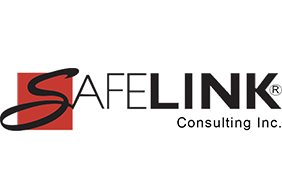SARS-CoV-2 has created many shortages and that includes disinfectants. What do you do when you’re unable to purchase brand name disinfectants?
Bleach seems to be an alternative for some uses, but there are precautions to be considered. The good news is that bleach, technically termed Sodium Hypochlorite, is listed on the EPA List N: Disinfectants for Coronavirus (COVID-19). The bad news is that bleach comes with some strict guidelines that if not followed can lead to adverse side effects!
First of all, bleach is a corrosive and can irritate or burn the skin and eyes. To protect employees from suffering workplace injuries and illnesses due to exposure to this chemical, employers must provide appropriate personal protective equipment (PPE). This PPE can include respiratory protection, gloves, goggles and face shields. (Keep in mind that if your business requires employees to use a respirator, then your health and safety program must include a Respiratory Protection Program. In most cases, when face shields are worn, the employee should also wear safety eyewear under the face shield as this chemical could splatter under the face shield. Refer to the product instructions and Safety Data Sheet for proper and safe usage instructions, personal protective equipment, disposal and other information. Get help from an expert.
Secondly, bleach can degrade many materials. It is important to understand that bleach has been deemed a hard surface disinfectant for combating SARs-CoV-2. That means it is not appropriate for items that are soft or porous. Always check to see if an item is surface-safe by checking the item’s Instructions for Care. Bleach can corrode protective coverings on items like operatory chairs and can pit stainless steel counters. These breaks and pits may subsequently harbor pathogens and may lead to the item needing to be replaced.
And what about that smell? According to Infection Control Today, dispelling the fear of bleach odor through real facts and information can drastically reduce concerns and complaints.
According to the CDC:
º Diluted household bleach solutions can be used if appropriate for the surface. Unexpired household bleach will be effective against coronaviruses when properly diluted.
º Use bleach containing 5.25–8.25% sodium hypochlorite. Do not use a bleach product if the percentage is not in this range or is not specified.
º Follow the manufacturer’s application instructions for the surface, ensuring a contact time of at least 1 minute. [According to EPA List N some products contact times are as short as 30 seconds, while others need to set for 10 minutes.]
º Ensure proper ventilation during and after application.
º Check to ensure the product is not past its expiration date.
º Never mix household bleach with ammonia or any other cleanser. This can cause fumes that may be very dangerous to breathe in.
º Prepare a bleach solution by mixing: 5 tablespoons (1/3rd cup) of 5.25–8.25% bleach per gallon of room temperature water or 4 teaspoons of 5.25–8.25% bleach per quart of room temperature water
º Bleach solutions will be effective for disinfection up to 24 hours. This means that it must be disposed of at the end of the day and a fresh mix used daily.
Get Poster: Six Steps for Safe & Effective Disinfectant Use
For our dental practice and dental laboratory clients… Keep in mind that both the OSHA’s Bloodborne Pathogens Standard and the CDC Guidelines for Infection Control in Dental Health-Care Settings, which includes dental labs, also need to be adhered to. This includes the requirement to use an EPA-registered tuberculocidal disinfectant (EPA List B) for operatories, dental instruments and devices, patient case contents received at the dental laboratory and other items visibly, knowingly or potentially contaminated with blood or saliva. With this said, reserve disinfectants confirmed safe for these items for that purpose and consider an EPA List N product for general disinfecting for areas like breakrooms and restrooms.
Get 10 tips for safely using bleach
For more information on respirator usage during the current pandemic see our Blogs below:
- Respiratory Protection – It’s Not a One and Done
- Top OSHA and FDA Updates on Mask and Respirator Shortage
- COVID-19 and OSHA Guidance on N95 Respirator Mask
Get an Expert - Having an expert assist you in developing a COVID-19 Safety Management Program is the best way to meet today's challenges. Need help with respiratory protection solutions and/or your infectious disease preparedness plan? The good news is SafeLink Consulting has simplified this process for you! We are ready to help you get this done quickly and economically. Contact us today for assistance. Complete the info request form or call 800.330.6003 or 470.533.2581. or set up a meeting with Sandy to learn more.
Learn more about what SafeLink Consulting can do to help your business with compliance services, including safety compliance, to meet OSHA training requirements and quality system consulting to meet FDA compliance. SafeLink Consulting assists businesses with workplace safety training, infection control training, HIPAA training online, quality systems, assessments, audits, due diligence, and more.
Industries include:
Dentistry compliance - assisting the dental practice with meeting requirements for OSHA, HIPAA, EPA, and CDC guidelines, patient safety and employee health & safety
Dental Laboratory compliance - assisting the dental lab with meeting requirements for OSHA, FDA, and CDC guidelines, employee health & safety, plus FDA requirements for lab manufacturing custom implant abutment /gmp for medical device manufacturers
Medical Device Manufacturers compliance - assisting with meeting OSHA compliance & FDA requirements, GMP - good manufacturing practices
General Industry compliance - assisting with OSHA compliance and FDA compliance as it pertains to the specific business
Beverage Industry compliance - assisting beverage businesses such as the craft brewery, winery, cidery, distillery, vintner with meeting OSHA compliance, health & safety, FDA requirements / GMP - Good Manufacturing Practices.
Get notification when new regulatory compliance training courses are added plus upcoming events by subscribing to our email news.









Leave Comment